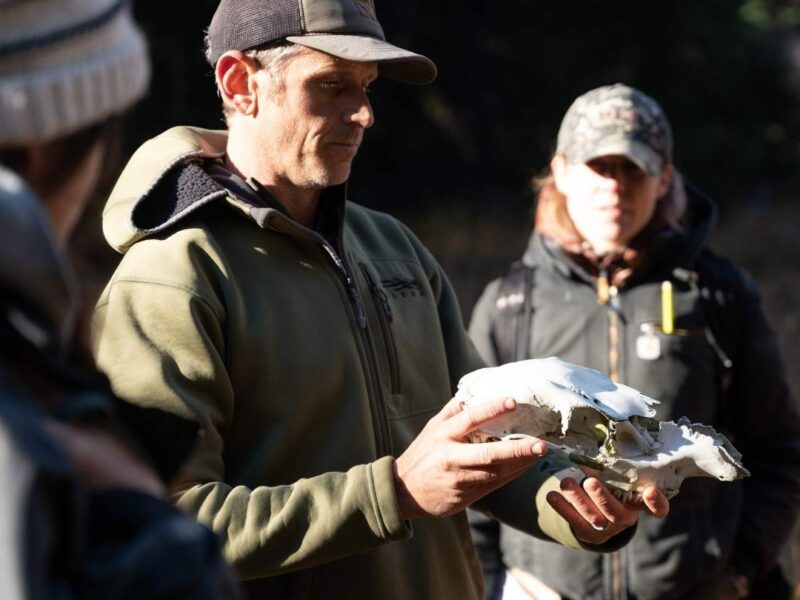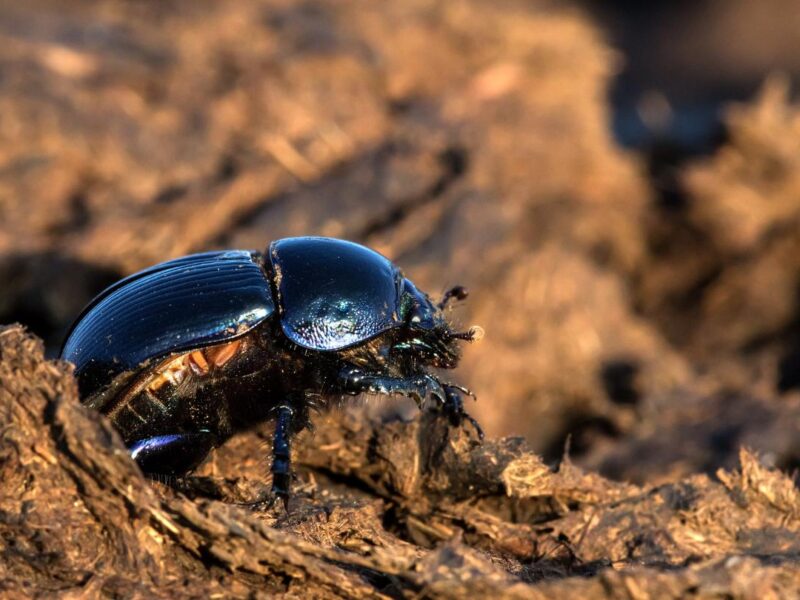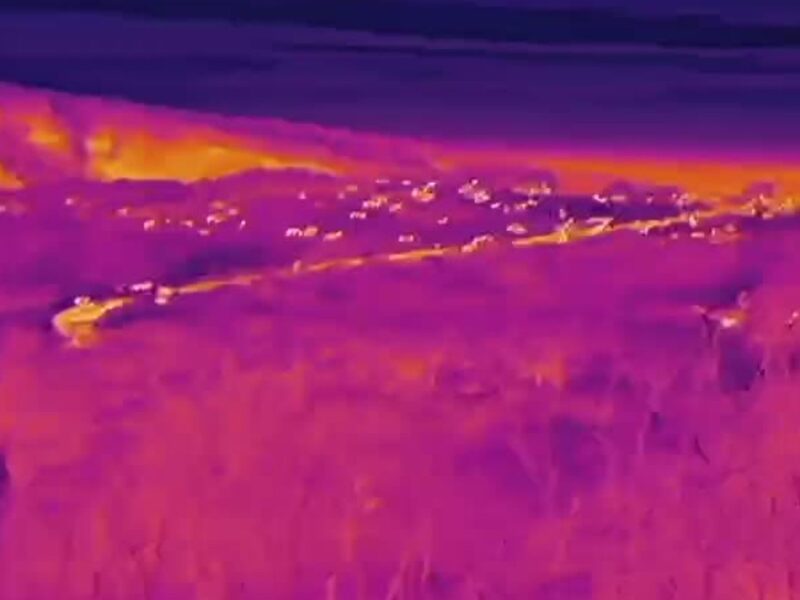WATCH: Turbo fladry and wolves: Another tool in the toolbox
After a series of wolf attacks left several of their livestock guardian dogs injured – and one killed – Erik Kalsta, a rancher and the Working Wild Challenge director at Western Landowners Alliance, and his wife Jami Murdoch knew they needed help. Though the sheep were unharmed (the dogs did their job!), the damage to the dogs and the growing vet bills were adding up fast.
”We’ve had some issues with wolves. We’ve had three different attacks in the last year. We lost one dog. We had multiple dogs beat up on several occasions resulting in a lot of vet bills.”
That’s when Jami reached out to Chrissy Lambert, a nonlethal conflict prevention specialist with USDA Wildlife Services. Chrissy suggested trying a tool called turbo fladry – a line of red flags attached to electrified polywire that can make predators like wolves hesitant to cross.
The Kalsta family and Lambert, along with a few partners, installed 1.5 miles of fladry around a pasture during the winter. Later, Chrissy returned to help remove it.
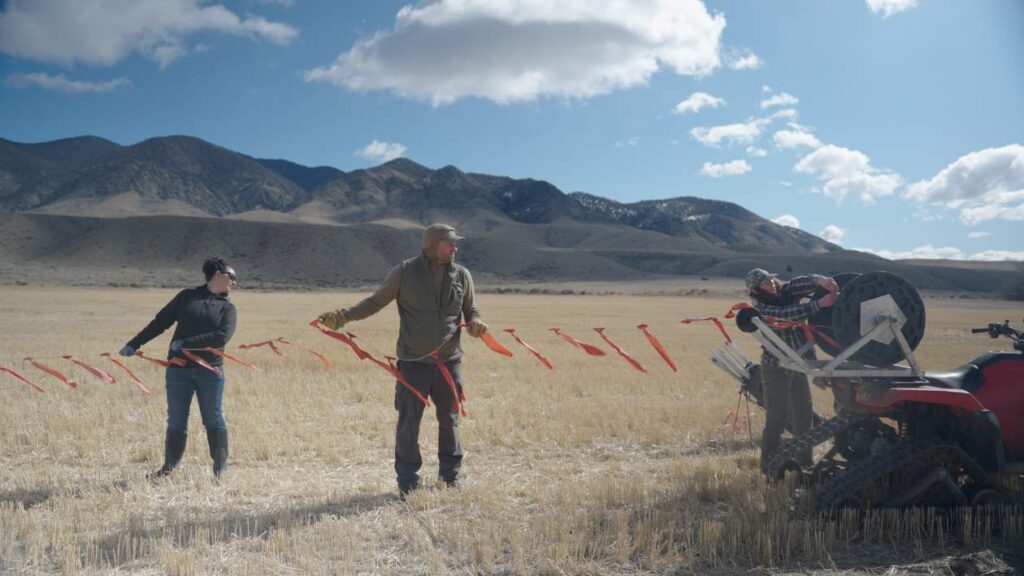
In the video, Kalsta notes some of the limitations of turbo fladry. “The maintenance required on a mile and a half of fence is difficult. And sheep don’t particularly respect fladry. So there are challenges.”
Turbo fladry isn’t a permanent solution. Wolves can get used to it over time, especially if it’s left up too long or isn’t maintained. But for seasonal use – during calving, lambing, or when you’ve got wolves nearby – it can buy time and a little peace of mind.
“Another tool in the toolbox, you know?” says Kalsta, “You gotta be able to try ’em all. Some will work for you, some won’t.”
In this Steward Tip video, we take you to the Kalsta Ranch to show how turbo fladry works in real conditions, what it takes to set up and why it’s worth considering as one more tool in the conflict reduction toolbox.
What is turbo fladry?
Turbo Fladry consists of a row of colored nylon or polyester flags (typically red) connected to electric polywire surrounding a specific livestock pasture. The movement of flags or streamers in the wind off of a fenced area creates a disturbance that makes predators, particularly wolves and coyotes, hesitant to approach.
Why might wolves avoid turbo fladry?
Turbo fladry works by tapping into a wolf’s natural caution around new things. Wolves are neophobic – meaning they tend to avoid unfamiliar sights and sounds. When red flags are hung just above the ground and flutter in the wind, they create a visual disturbance that can trigger a flight response, (hopefully) causing wolves to steer clear. The electrified polywire adds a layer of negative interaction, should wolves decide to test the fence.
Does turbo fladry deter bears?
No. Fladry is not an effective deterrent for bears.
How long is turbo fladry effective?
Turbo fladry itself should not be used as a permanent tool as it loses its efficacy over time as wolves or coyotes become habituated. The fence can be installed during calving or lambing season annually and removed after. It has been shown to deter wolves for up to 60 days and is recommended to be removed after 60 days to prevent habituation.
How to install turbo fladry
Fladry should be placed close to 18” apart on temporary or permanent fencing. It should hang on a fence strand that is no higher than 28” above the ground and should be placed to avoid surrounding vegetation. A fiberglass or other lightweight post should be placed approximately every 10 yards to sustain the poly-wire. Fladry is less practical when used in terrain that has vegetation or other terrain obstacles that may disrupt movement of the material. This tool requires consistent maintenance in order to be effective.
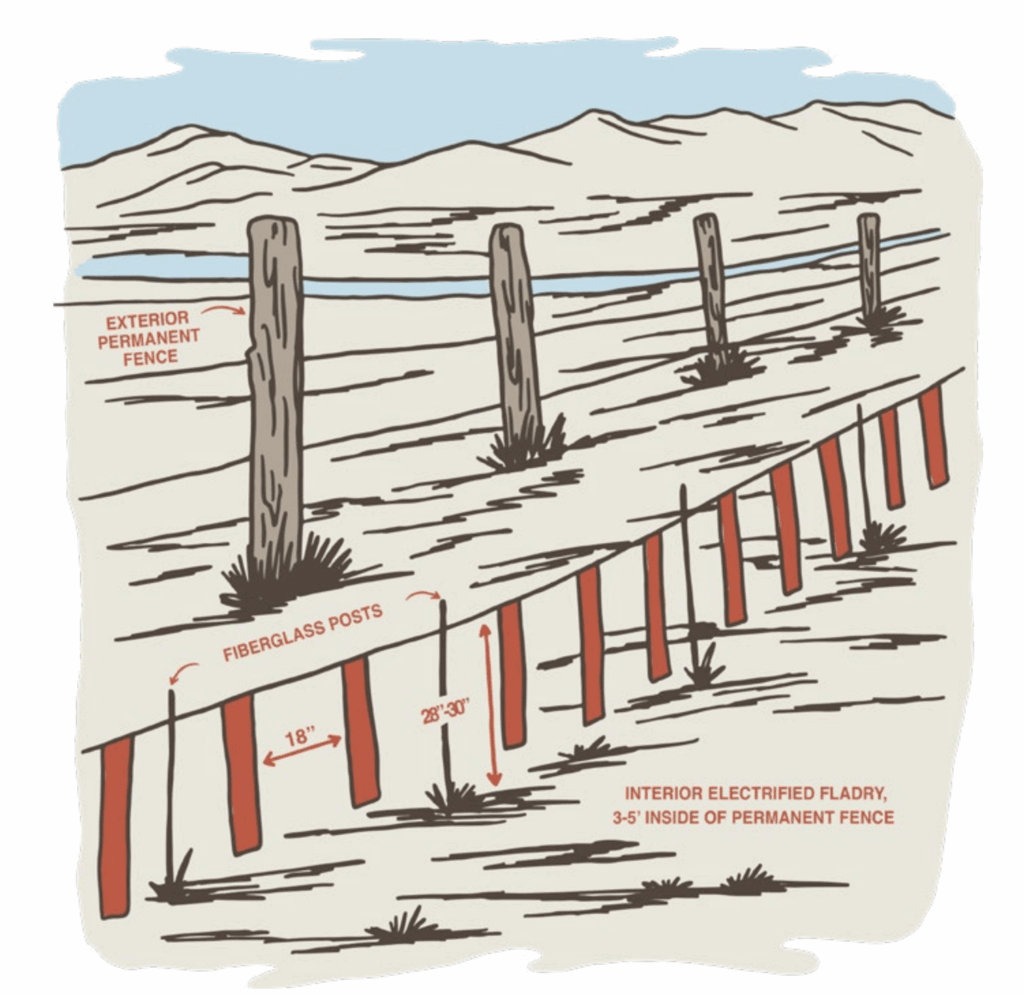
Thinking about trying turbo fladry or another electric fencing tool?
Download our free Electric Fencing Toolkit to get started.
Within this toolkit, we share information on four of the most promising forms of fencing and other barriers to reduce conflict with large carnivores: electrified netting for night pens, turbo fladry, 5- and 4-wire electric fences, and electric drive-over mats. This guide includes case studies that highlight lessons learned through implementation and continued maintenance on ranches in Oregon and Montana.
This toolkit draws from a co-production process, including meetings amongst landowners, livestock producers, Tribal members, wildlife biologists, researchers, staff representing partner organizations and federal and state agencies. It coalesces years of knowledge and experience gained on the land through carnivore-livestock conflict management and research and is intended to serve as a guide for livestock producers, and other partners in stewarding landscapes shared by people, livestock, and wildlife.


